Its not always about the image!
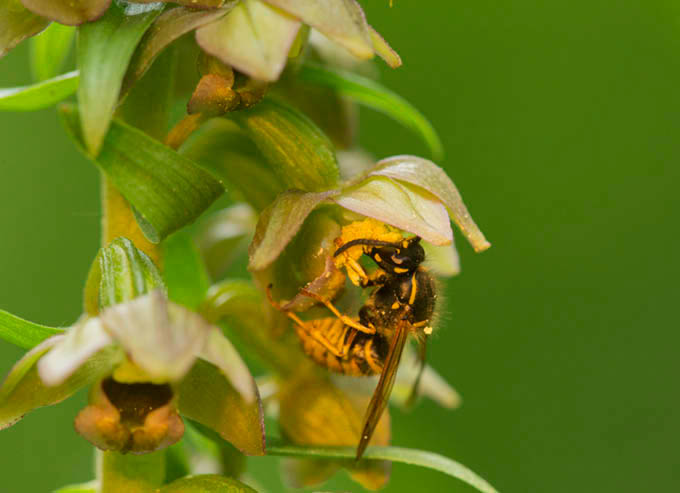
As a wildlife photographer I like to think I am a fairly good naturalist. I was fascinated by wildlife long before I became a photographer and most of what I read is about natural history. Unfortunately when I switched from a keen amateur to a pro I guess I chased the image a bit too vigorously and sometimes forgot about the intricacies of the natural history behind my subjects. This dilemma was brought to the fore this week when I set out with a friend to photograph broad-leaved helleborines. As orchids go these are fairly boring, being dominantly green with small, subtle dark-ish red flowers.
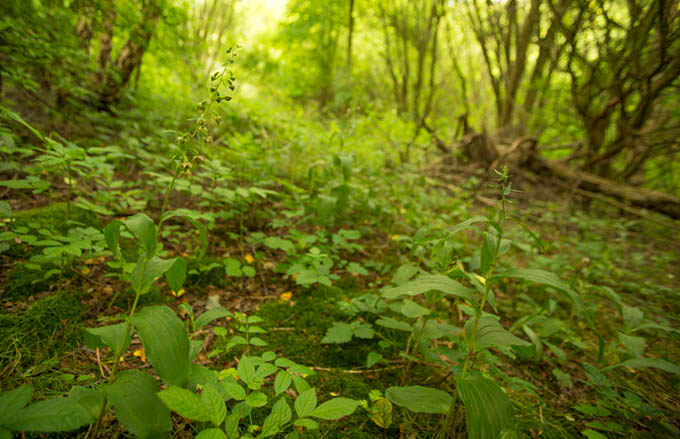
Photographically when I do a new species (I hadn’t photographed these before) I like to get a range of images that show the plant in its habitat as well as some close detail. Another slight problem was that the plants were growing in dark woodland.
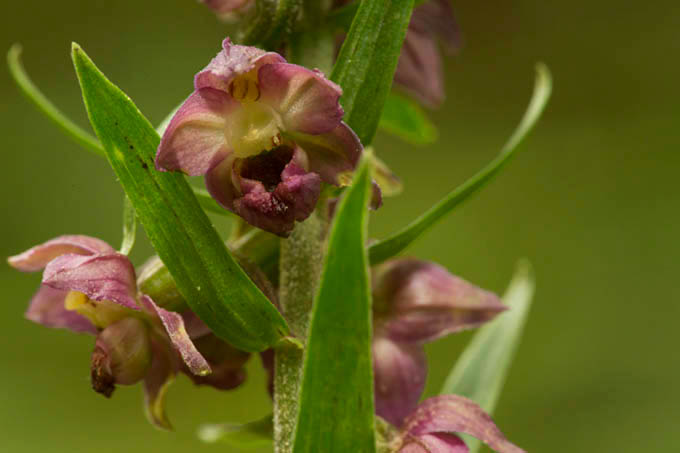
I must admit that when I first saw them I was a bit underwhelmed! However, as with most things I became more fascinated the longer I worked with them, though in general I wasn’t stunned! This all changed when I noticed a wasp working lazily around an individual flower. It seemed to have a huge yellow bit of stuff either stuck to its jaws, or collected there. I couldn’t fathom out what it was doing, it seemed very dozy and worked very slowly.
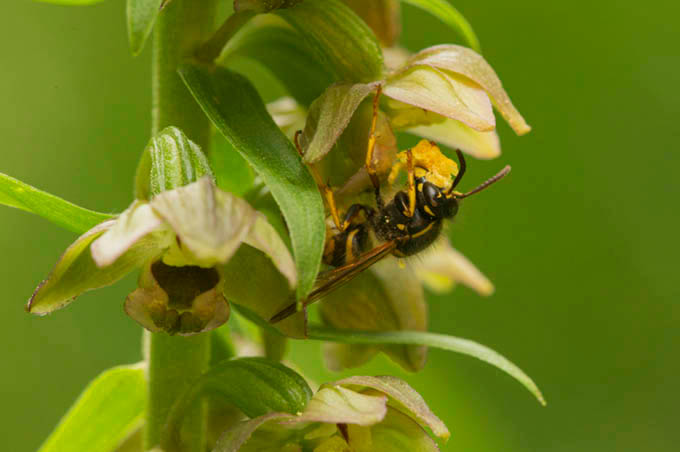
As I sat and watched I realised it was actually cutting the yellow pollinia from each flower and adding them to the stack in its jaws. This is pollination in action, but what a bizarre form of it. I know that many orchids are pollinated by getting their pollinia (male parts) stuck to the head of a visiting insect which is arriving for nectar but I had never seen any insect actually collecting the pollinia as a source of food before.
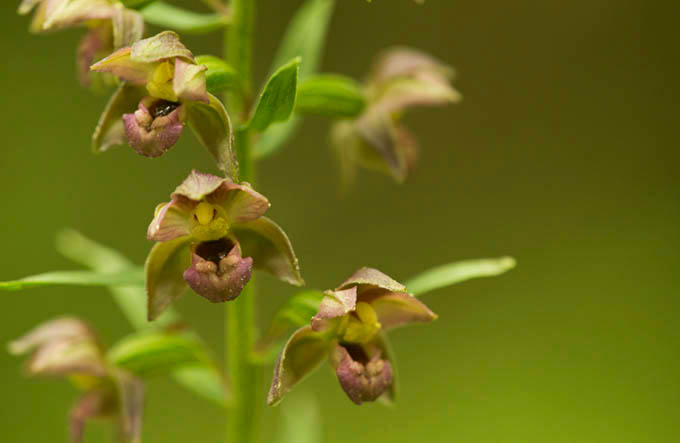
Back at home I consulted one of my many orchid books and found that broad-leaved helleborines are pollinated by a variety of wasps. These often behave as if drunk (which they actually are) because the flower can produce ethanol from its pollen if it goes off a bit. Generally the books suggested that the pollinia should stick to the head of a visiting insect and get transferred that way. It didn’t mention anything about wasps deliberately collecting them which I guess is for food to be taken back to the nest.
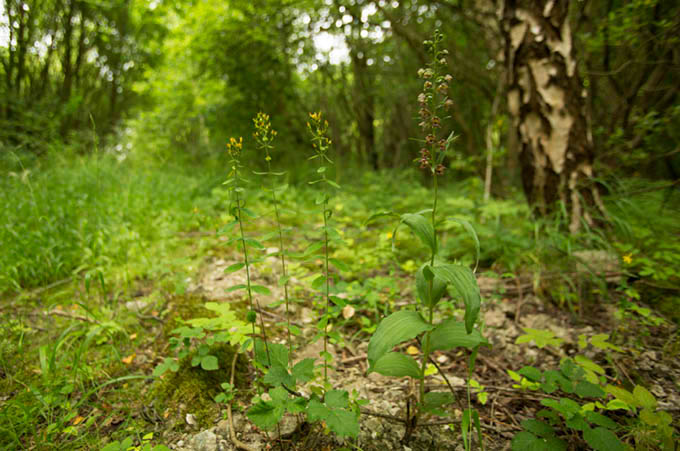
Whilst the images are nothing special, I learnt loads that afternoon and it reminded me that being fascinated by what at first glance may be boring and mundane natural history is the very backbone of good wildlife photography!

